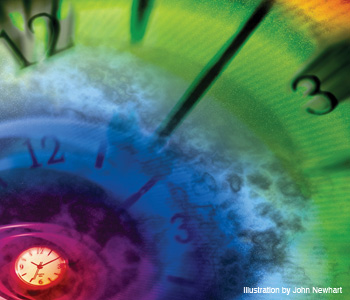Feature
Ultrahigh-Speed Optical Processing Using Space-Time Duality
Temporal all-optical processing systems—which are based on the space-time duality of light—provide a practical approach for meeting the bandwidth demands of next-generation ultrahigh-speed technologies.

For decades, researchers have explored how to use light to process information. The intriguing reasons for taking this approach are the potential that light has for achieving high bandwidth and integration with high-speed optical communication systems. Optical processing in free space is a mature field that is based on the interplay between diffraction and optical elements such as lenses, apertures and prisms. This area of research has been called Fourier optics, since, by suitably combining diffraction and lenses, one can perform imaging and magnification as well as generate the spatial Fourier transform of objects, which enables filtering, image processing and pattern recognition.
…Log in or become a member to view the full text of this article.
This article may be available for purchase via the search at Optica Publishing Group.
Optica Members get the full text of Optics & Photonics News, plus a variety of other member benefits.
